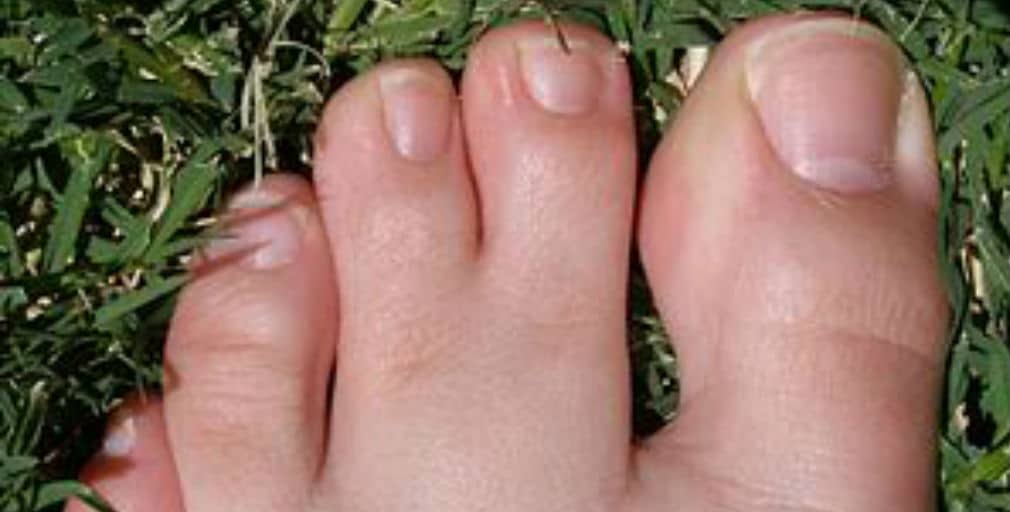What You Need to Know About Webbed Toes
What’s one of the first things most new parents do after holding their newborn for the first time? (Besides smiling, laughing, and crying tears of joy all at once, of course?)
Count their fingers and toes, of course!
Well, what happens when you arrive at a number other than 10 of each?
Some babies are born with extra toes (polydactyly), which you can read a little bit more about here. In other cases, all 10 toes might be present, but two or more of them appeared “webbed” or fused together (syndactyly). That’s what we’d like to talk about today.
While new parents are understandably concerned about any physical “defects” their child may have, most cases of webbed toes are nothing to worry about.
Here’s what you need to know about this condition.
Everyone Has Webbed Feet at First
It’s true! It’s just that for most of us, the webbing goes away long before birth.
During the earliest stages of fetal development, all five digits on each hand and foot are connected by soft tissue. However, about six to eight weeks after conception, an enzyme is released that gently dissolves that connecting tissue and separates the fingers and toes.
At least, that’s the way it’s supposed to work. If the process is not fully completed (usually due to a simple gene defect), the baby will be born with at least partially webbed toes.
They Are Relatively Rare—But Probably More Common Than You Think
About one out of every 2,000 babies is born with webbed toes.
That’s uncommon, but not really super rare. Consider that the state population of California is almost 40 million—that means about 20,000 current Californians (and more than 160,000 Americans!) were born with webbed toes. And thousands more are born every year.
In other words? You and your baby are definitely not alone.
There Are Several Different Types of Webbed Toes
Webbed toes can take many different forms. Toes may be partially or completely connected. Maybe only two toes are affected; maybe several (or all) of them are.
The most common manifestation of syndactyly is partial fusion of soft, flexible tissues and skin between the second and third toes. However, in rare cases harder tissues (such as cartilage or bone) may be fused or irregularly joined.
Most Cases are Relatively Harmless
Here’s where you can probably breathe a sigh of relief. The vast majority of syndactyly cases (though certainly not all) only involve fusion of skin and soft tissues. All the individual bones and joints are still there, in the right place and alignment.
This is called simple syndactyly. It’s very easy for us to correct, and should have no effect on your child’s health, happiness, or development whatsoever.
Your Child May Not Need Treatment Right Away, or Maybe Even at All
Those simple syndactyly cases, like we said, should have no bearing on your child’s development whatsoever. They are purely cosmetic.
Many parents still choose to have their child’s webbed toes separated at a very young age anyway, and that’s fine. As long as your child is healthy and at least a couple of months old, surgery is an appropriate consideration.
However, if webbed toes are not causing any symptoms or impairments, it’s fine to wait.
When your child is older, you may let them make the decision about whether they want their webbed toes separated. Many kids are embarrassed by feet that look different, but others may be proud of something that makes them feel unique!
If it isn’t hurting them or affecting their daily lives, there’s no need for fear or worry.
More Complicated Cases May Need More Aggressive (and Earlier) Treatment
Once in a while we’ll see a case of webbed toes that we think might impair foot function down the road.
Usually, this would be in a circumstance where the toes are not just connected by soft and flexible skin, but also by fused cartilage or bone. In the rarest cases, entire bones may be missing, or joints are out of alignment.
Don’t worry—with proper care your child should still learn to walk, run, and play alongside their peers. But to help them hit those developmental milestones, it will be important to have their webbed toes corrected before they start standing and walking on their own.
Surgery for Webbed Toes Has a Great Track Record for Safety and Success
Surgery is the only way to separate toes that are webbed or fused together. The good news is that it is highly successful on average—even in more complicated situations.
Simple syndactyly usually just requires cutting the soft webbing tissue in a zigzag pattern, then stitching the skin back together. (Small skin grafts are sometimes required.)
More complicated or complex cases obviously require more extensive surgical procedures, but once again the success rates are very high if surgery is completed relatively early in your child’s development.
Your little one may require a short cast on their foot for at least a few weeks to protect the toes as they heal. Afterward, we may recommend rubber toe spaces, braces, physical therapy, or other temporary tools and techniques to help them develop full motion and articulation. Full recovery requires anywhere from a few weeks to a few months on average.
We Are Southern California’s No. 1 Option for Childhood Foot Deformities
Located in Ladera Ranch, the Southern California Foot & Ankle Specialists have a well-earned reputation for providing the highest quality foot and ankle care for children.
Although we provide comprehensive treatment for all ages, pediatrics have always been a primary focus and an extremely important part of our mission. It goes way back for us—our own Dr. Rodriguez was born with clubfoot, and is now one of only a handful of doctors in California certified in the Ponseti method, the international gold standard protocol for treating clubfoot.
Clubfoot, webbed toes, extra toes, flat feet—if your child is born with any kind of foot or toe deformity, we are 100% committed to doing whatever it takes to help. That includes advanced treatment methods, making ourselves available to answer all your questions and concerns, and even putting you in touch with community support and advocacy groups that can help.
If you are concerned about your child’s feet, give us a call today at (949) 364-9255 (WALK).


